CF1083C.Max Mex
普及/提高-
通过率:0%
AC君温馨提醒
该题目为【codeforces】题库的题目,您提交的代码将被提交至codeforces进行远程评测,并由ACGO抓取测评结果后进行展示。由于远程测评的测评机由其他平台提供,我们无法保证该服务的稳定性,若提交后无反应,请等待一段时间后再进行重试。
题目描述
Once Grisha found a tree (connected graph without cycles) with a root in node 1 .
But this tree was not just a tree. A permutation p of integers from 0 to n−1 is written in nodes, a number pi is written in node i .
As Grisha likes to invent some strange and interesting problems for himself, but not always can solve them, you need to help him deal with two types of queries on this tree.
Let's define a function MEX(S) , where S is a set of non-negative integers, as a smallest non-negative integer that is not included in this set.
Let l be a simple path in this tree. So let's define indices of nodes which lie on l as u1 , u2 , … , uk .
Define V(l) as a set { pu1 , pu2 , … , puk }.
Then queries are:
- For two nodes i and j , swap pi and pj .
- Find the maximum value of MEX(V(l)) in all possible l .
输入格式
The first line contains a single integer n ( 2≤n≤2⋅105 ) — the number of nodes of a tree.
The second line contains n integers — p1 , p2 , … , pn ( 0≤pi<n ) — the permutation p , it's guaranteed that all numbers are different .
The third line contains n−1 integers — d2 , d3 , … , dn ( 1≤di<i ), where di is a direct ancestor of node i in a tree.
The fourth line contains a single integer q ( 1≤q≤2⋅105 ) — the number of queries.
The following q lines contain the description of queries:
At the beginning of each of next q lines, there is a single integer t ( 1 or 2 ) — the type of a query:
- If t=1 , the line also contains two integers i and j ( 1≤i,j≤n ) — the indices of nodes, where values of the permutation should be swapped.
- If t=2 , you need to find the maximum value of MEX(V(l)) in all possible l .
输出格式
For each type 2 query print a single integer — the answer for this query.
输入输出样例
输入#1
6 2 5 0 3 1 4 1 1 3 3 3 3 2 1 6 3 2
输出#1
3 2
输入#2
6 5 2 1 4 3 0 1 1 1 3 3 9 2 1 5 3 2 1 6 1 2 1 4 2 2 1 1 6 2
输出#2
3 2 4 4 2
说明/提示
Number written in brackets is a permutation value of a node.
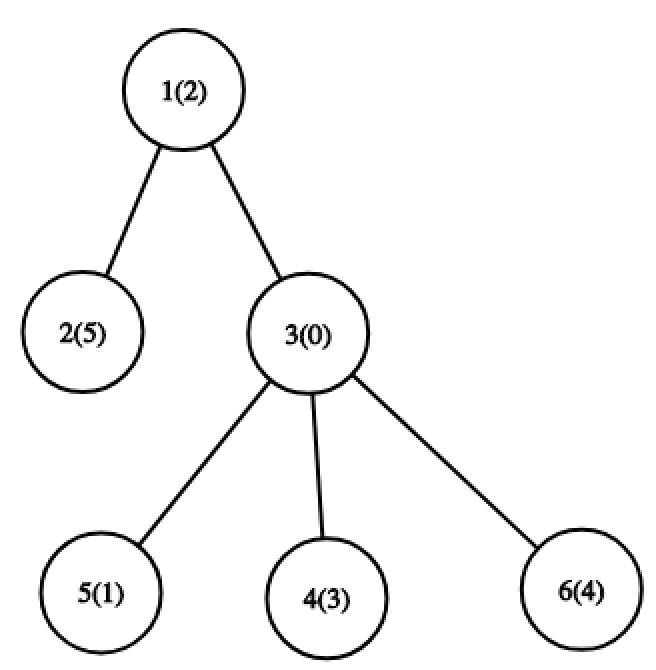 In the first example, for the first query, optimal path is a path from node 1 to node 5 . For it, set of values is {0,1,2} and MEX is 3 .
In the first example, for the first query, optimal path is a path from node 1 to node 5 . For it, set of values is {0,1,2} and MEX is 3 . 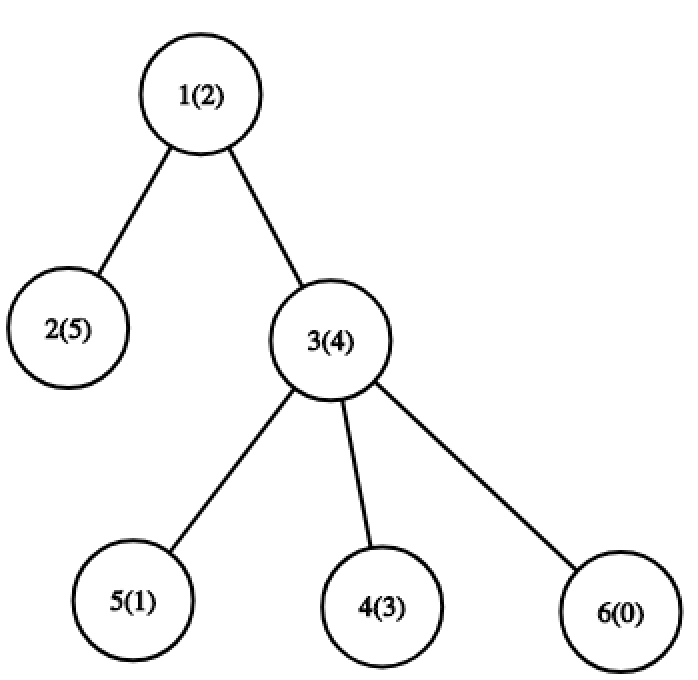 For the third query, optimal path is a path from node 5 to node 6 . For it, set of values is {0,1,4} and MEX is 2 .
For the third query, optimal path is a path from node 5 to node 6 . For it, set of values is {0,1,4} and MEX is 2 . 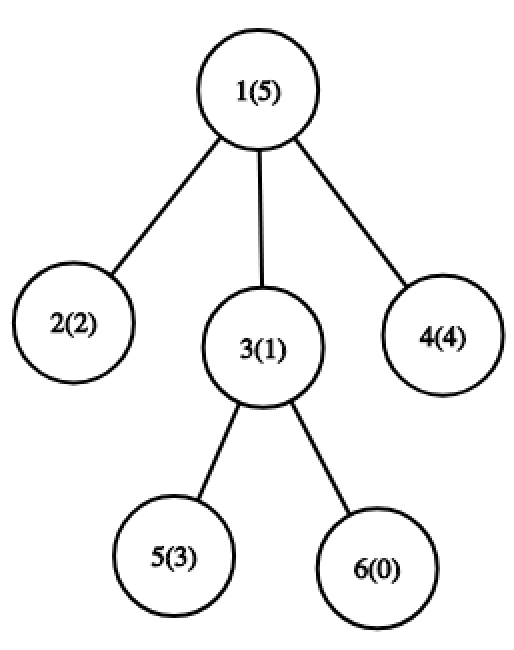 In the second example, for the first query, optimal path is a path from node 2 to node 6 . For it, set of values is {0,1,2,5} and MEX is 3 .
In the second example, for the first query, optimal path is a path from node 2 to node 6 . For it, set of values is {0,1,2,5} and MEX is 3 . 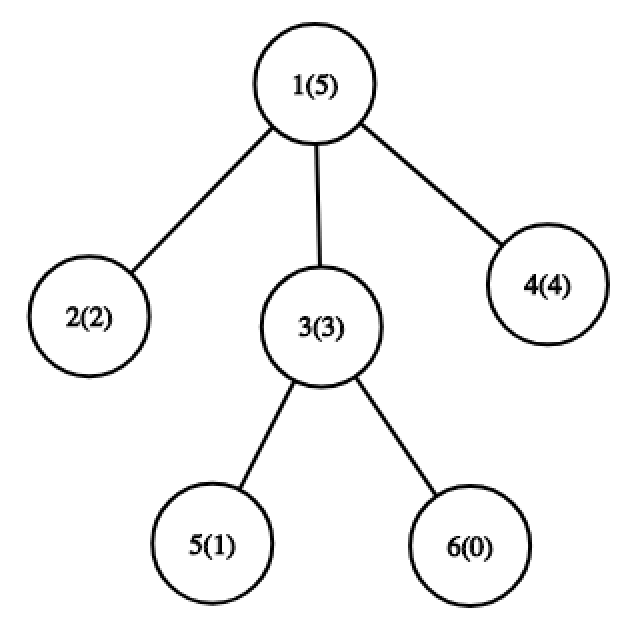 For the third query, optimal path is a path from node 5 to node 6 . For it, set of values is {0,1,3} and MEX is 2 .
For the third query, optimal path is a path from node 5 to node 6 . For it, set of values is {0,1,3} and MEX is 2 . 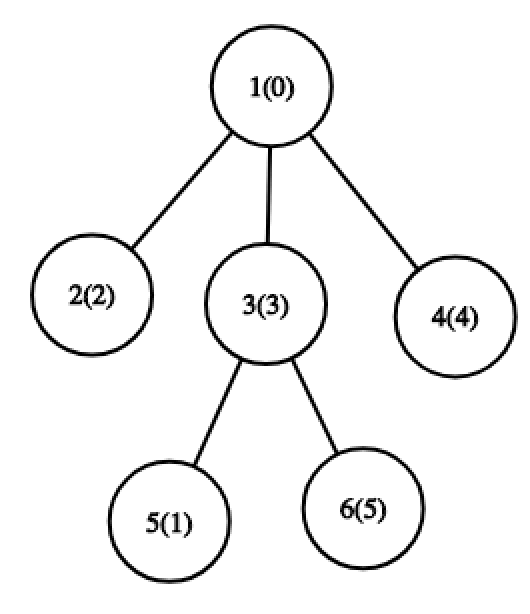 For the fifth query, optimal path is a path from node 5 to node 2 . For it, set of values is {0,1,2,3} and MEX is 4 .
For the fifth query, optimal path is a path from node 5 to node 2 . For it, set of values is {0,1,2,3} and MEX is 4 . 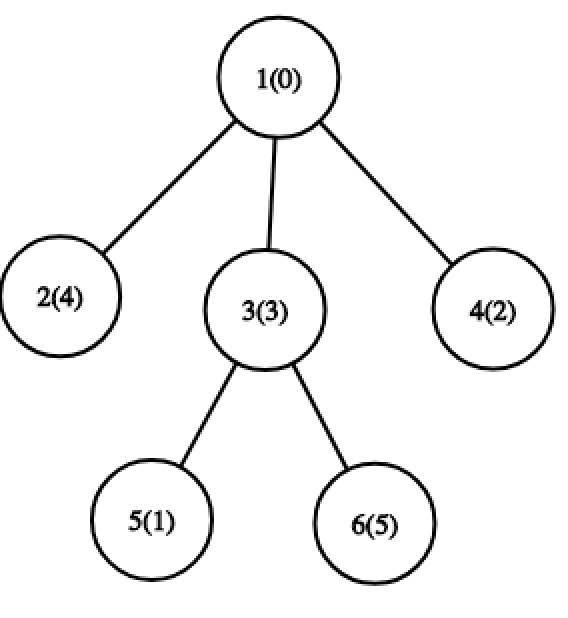 For the seventh query, optimal path is a path from node 5 to node 4 . For it, set of values is {0,1,2,3} and MEX is 4 .
For the seventh query, optimal path is a path from node 5 to node 4 . For it, set of values is {0,1,2,3} and MEX is 4 . 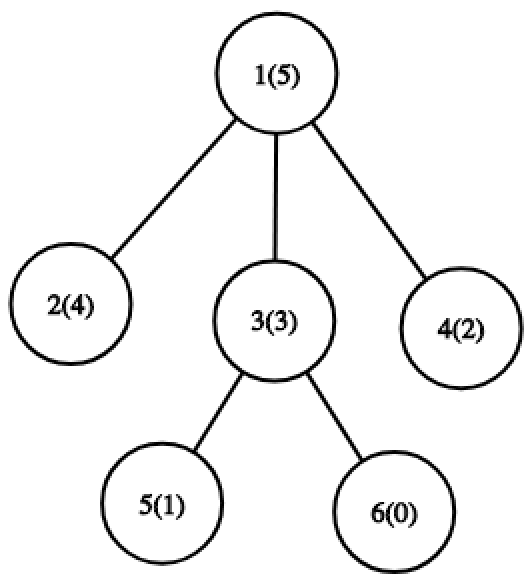 For the ninth query, optimal path is a path from node 6 to node 5 . For it, set of values is {0,1,3} and MEX is 2 .
For the ninth query, optimal path is a path from node 6 to node 5 . For it, set of values is {0,1,3} and MEX is 2 .